
New Power Platform capabilities announced at Microsoft Ignite
This year at Microsoft Ignite, Microsoft Power Platform is bringing added ease and innovation to low-code app development and automation for citizen developers, business analysts, IT admins, and professional developers.
Today we are announcing a new set of capabilities across Microsoft Power Platform that includes:
- Enhanced collaboration for users building apps with built-in commenting, users can write and share Office-like comments directly inside the authoring canvases of Power Apps, Power Virtual Agents, and Power Automate.
- Licensing flexibility with the Microsoft Power Apps per app pay-as-you-go plan, allowing developers to use an Azure subscription to license users.
- Discover inefficiencies in workflows with Process Advisor, in Microsoft Power Automate, use data insights to find and resolve inefficient daily business processes and workflows.
- Data insights made easy for teams with the general availability of the Microsoft Power BI App in Microsoft Teams. Power BI can be included in chats, meetings, calendar invites and Microsoft Teams.
- Accelerated innovation with fusion team development with new capabilities ranging from Power Apps mobile apps to new features for GitHub Codespaces, Git version control.
- Integrate AI easier than ever into apps with Microsoft AI Builder Bring Your Own Model to integrate models into any control in Power Apps via Power Fx and included AI Builder capacity.
Be sure to watch the Microsoft Power Platform breakout sessions for a deep dive into these capabilities.
- Empower data-backed decision-making with Power BI, Power Automate, and Azure Synapse Analytics
- Accelerate innovation with low-code applications using Microsoft Power Platform
- The future of business is seamless collaboration – how Teams and Microsoft Power Platform engage your entire workforce
Enhanced collaboration for users building apps, flows, and chatbots with Microsoft Power Platform commenting
Today, collaboration with comments is in preview. Comments allow you to contextually add notes, feedback, and discuss with others directly while building apps, flows, or chatbots, just as one would in Microsoft Word, Excel, or PowerPoint.
You can now comment on a screen in a Power App, so a colleague can help with a formula, or remind a team about changes to a specific step in a Power Automate flow. You can also collaborate with subject matter experts when building complex Power Virtual Agents bots.
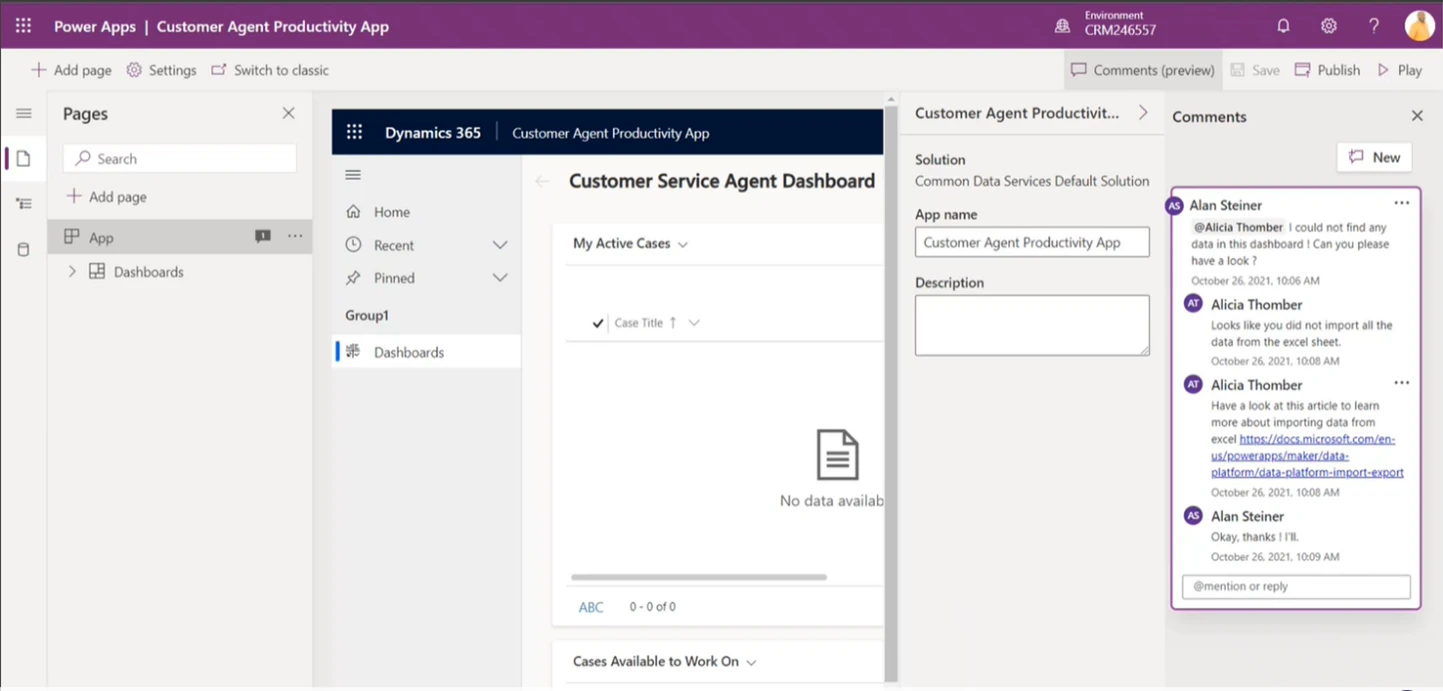
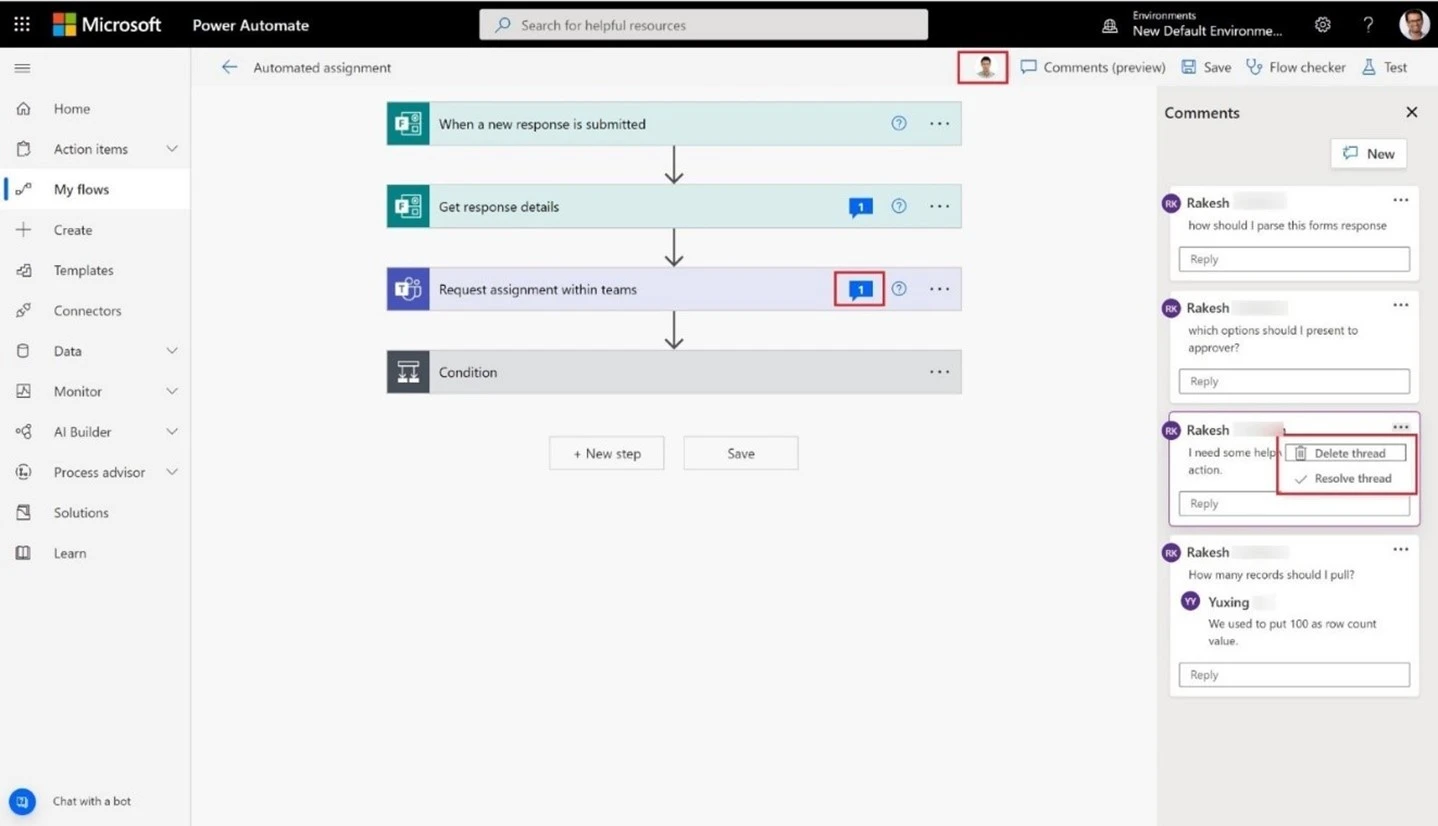
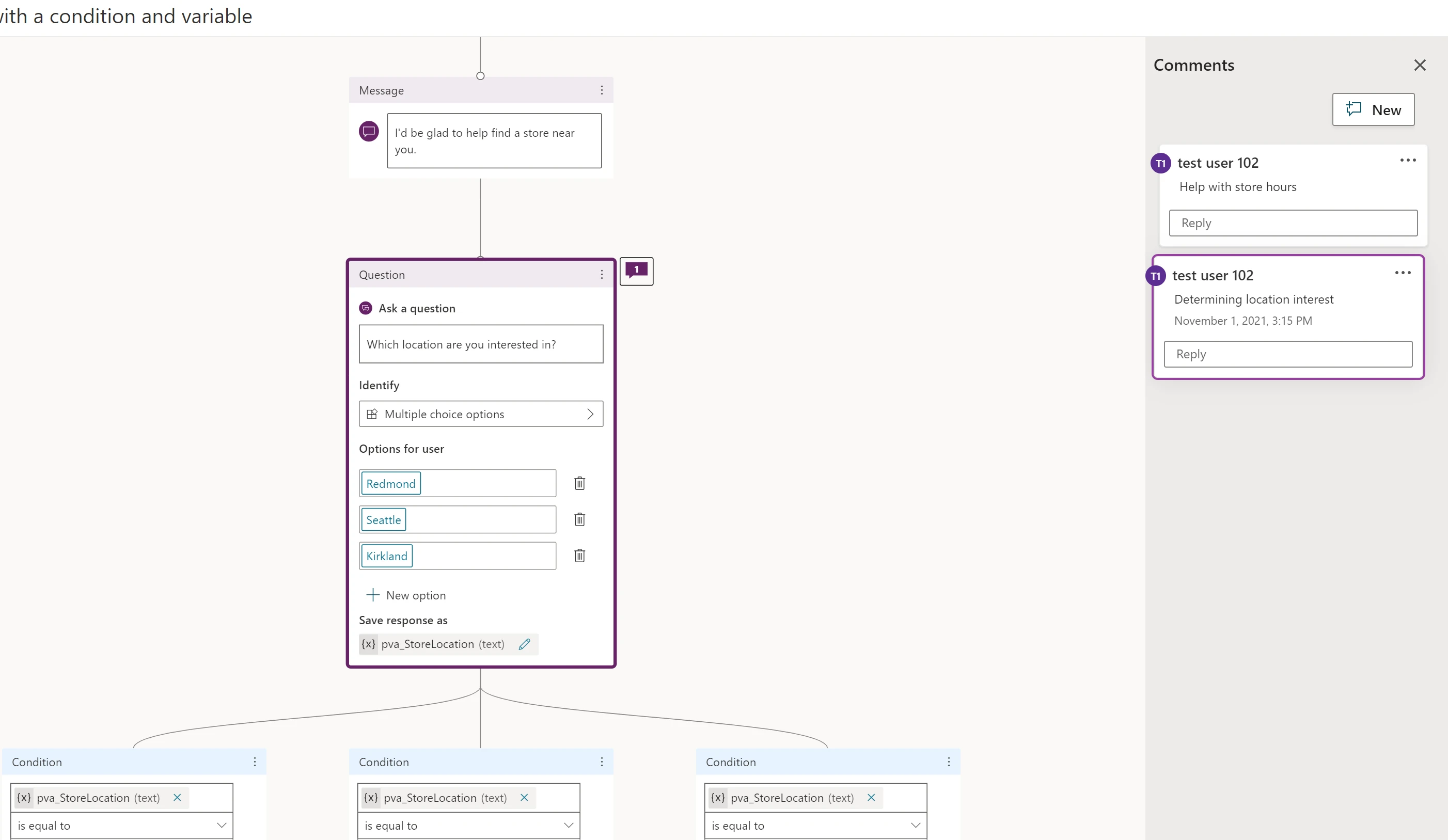
Power Apps pay-as-you-go with an Azure subscription
Today pay-as-you-go purchasing is available in preview for Power Apps. Now, there is no up-front cost to get started with Power Apps, and you can effortlessly add Power Apps to your Azure solutions. Customers can now purchase the Power Apps per app plan with an Azure subscription, in addition to the existing Power Apps per user and per app subscription plans already available across Microsoft’s commerce channels.
The Power Apps per app pay-as-you-go plan introduces the flexibility for customers to pay for Power Apps based on usage—covering authenticated users of internal apps and portals. Priced at $10 per active user per month, charges are incurred against a Microsoft Azure subscription based on the number of unique users that run the app each month. Pay only for what you use—just like other Azure services.
Learn more about this new capability in this Mechanics’ video segment.
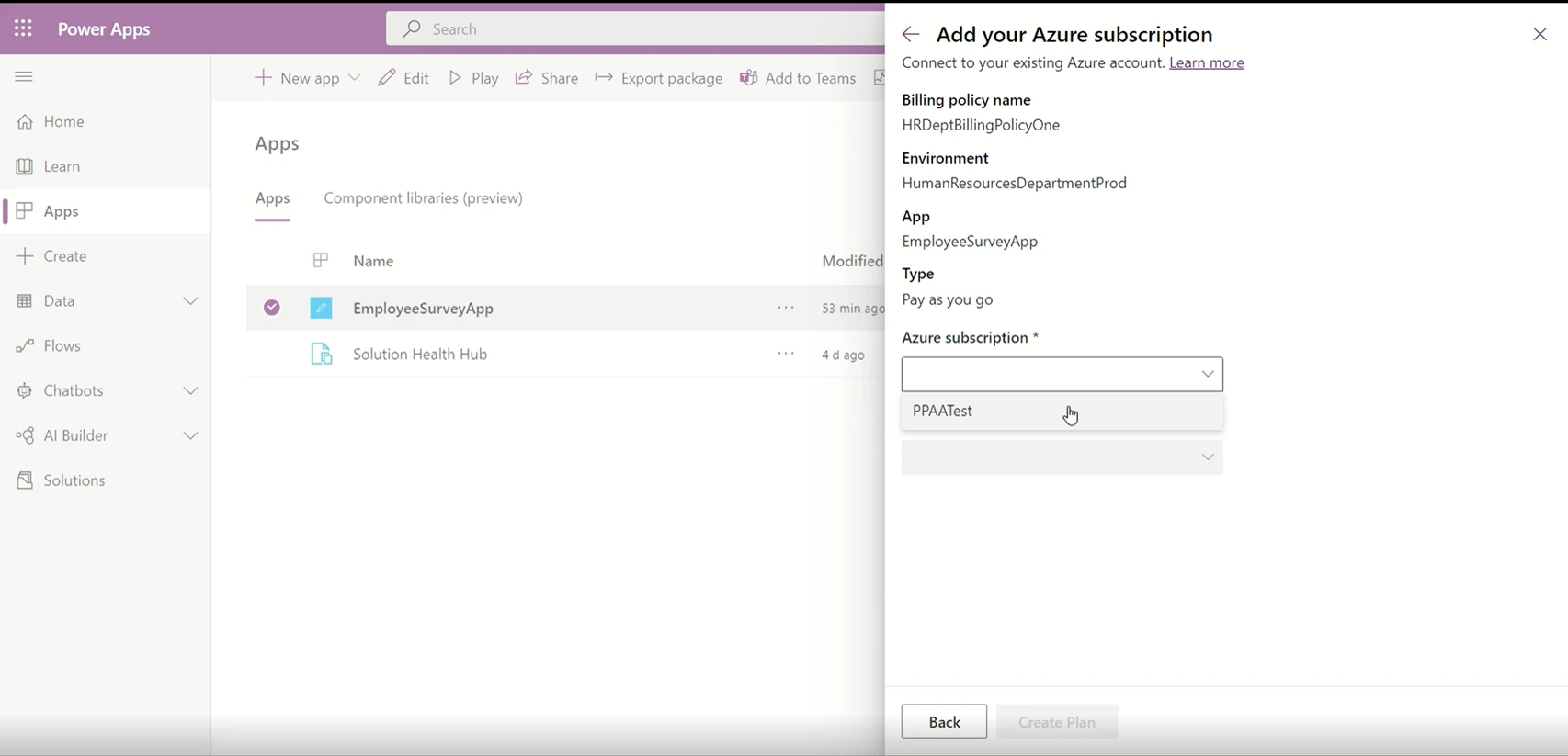
Discover inefficiencies in workflows with process mining
The next evolution of process advisor is available with the preview of process mining. Process mining is part of process advisor and provides direct data insights across business processes to identify inefficiencies. Process advisor includes two powerful capabilities: the existing task mining capability for capturing user interactions on a desktop, and process mining uses business data to provide a holistic view into bottlenecks across the business.
With process mining, organizations can:
- Easily get started: Users can quickly create a new process with the intuitive interface and upload data from different systems of record for analysis.
- Customize data with deeper analytics: Users can customize their insights by selecting from an array of attributes that they define—such as regions, invoice types, and more—and filter down to identify bottlenecks in their processes. They can review the process maps and analytics to glean insights.
- Discover inefficiencies and improve productivity: From these insights, users can quickly identify which activities are the most time-consuming, discover commonalities in their business practices, and streamline workflows.
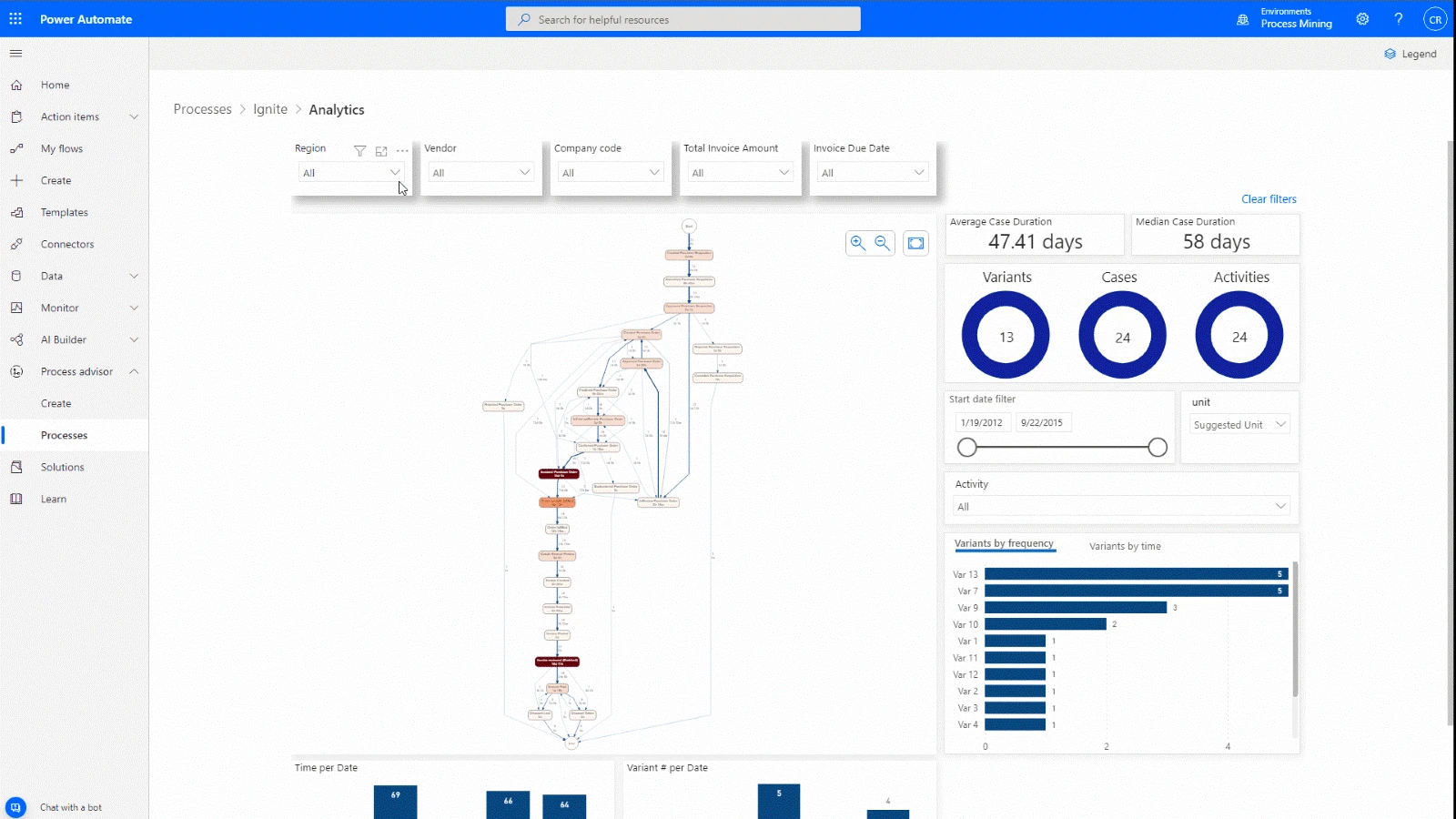
Data insights made easy for teams with Microsoft Power BI App in Teams
Today the Power BI App in Teams is now generally available.
With this availability, Power BI can be easily included everywhere collaboration happens in Teams, including chats, meetings, and calendar invites. As part of general availability, there are a host of enhancements and it is now easier to deploy broadly in an organization.
- Notification dashboards: Share notifications so it’s easier to stay up to date.
- Report Pins: The new pin a report as a tab feature helps quickly bring data into Team channels where it’s easier to find by teams.
- Project Goals: Create and track key project goals with the new scorecard visual that is part of the ongoing Goals public preview.
To learn more about all the Power BI announcements and get started, please visit the blog post.
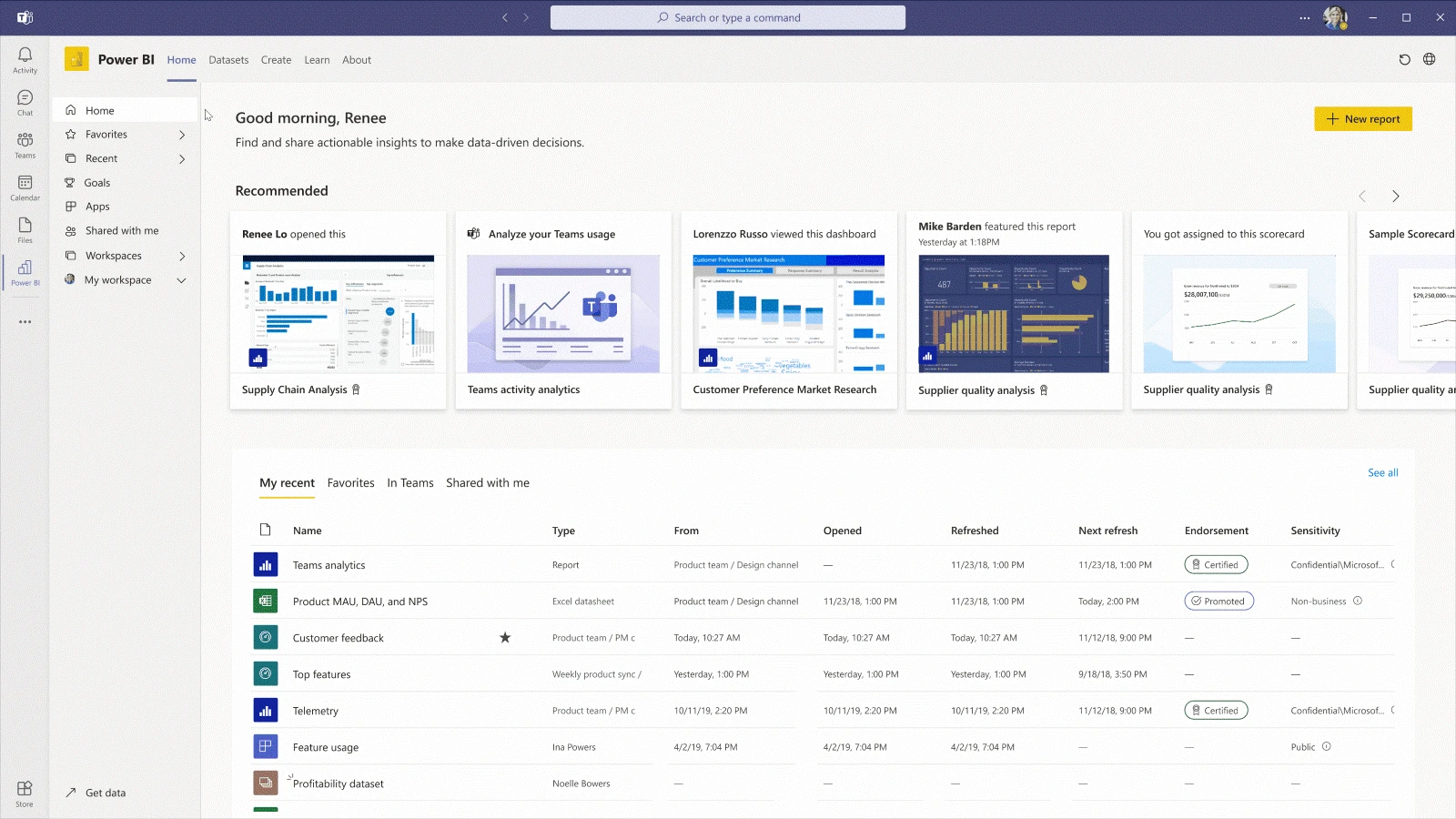
Accelerate innovation with fusion team development
Enabling professional developers and business users to build apps together in fusion teams is a key path to getting creating business apps quickly.
Power Apps makers can package apps as native mobile apps for Android and iOS. This includes:
- End-to-end branding: From the home screen icon to app UX.
- Consolidate apps: Embed multiple Canvas apps into a single mobile app.
- Streamline app delivery: Distribute apps natively to reach more end-users.
- Secure mobile applications: Enterprise governance with Intune for individual apps.
Read more about Power Apps mobile apps (preview).
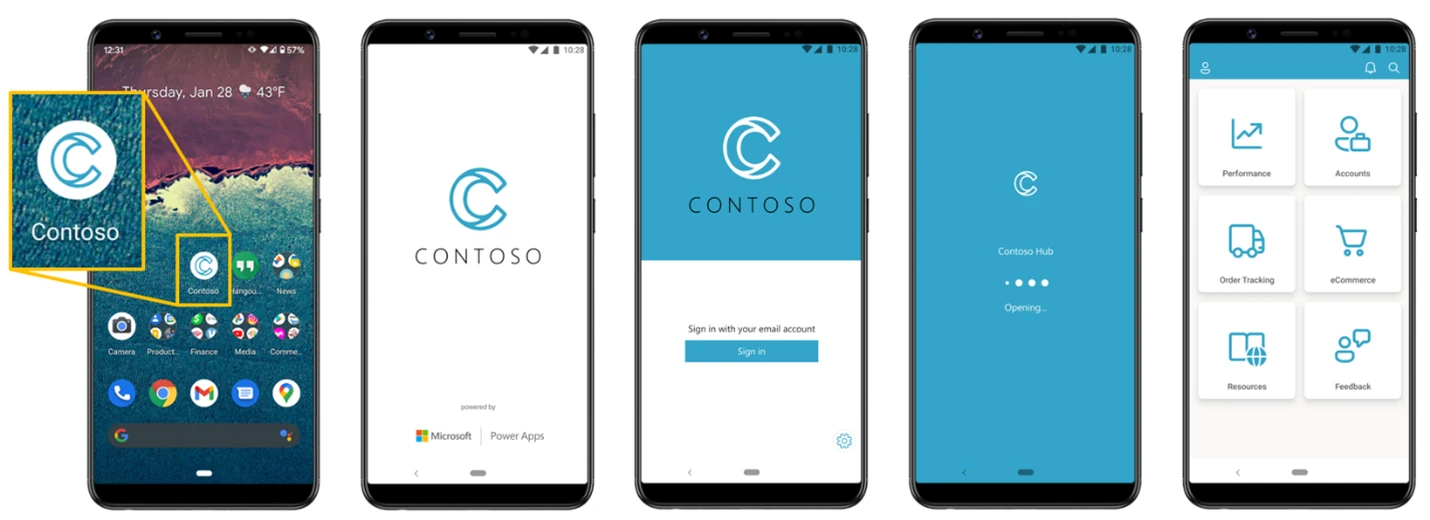
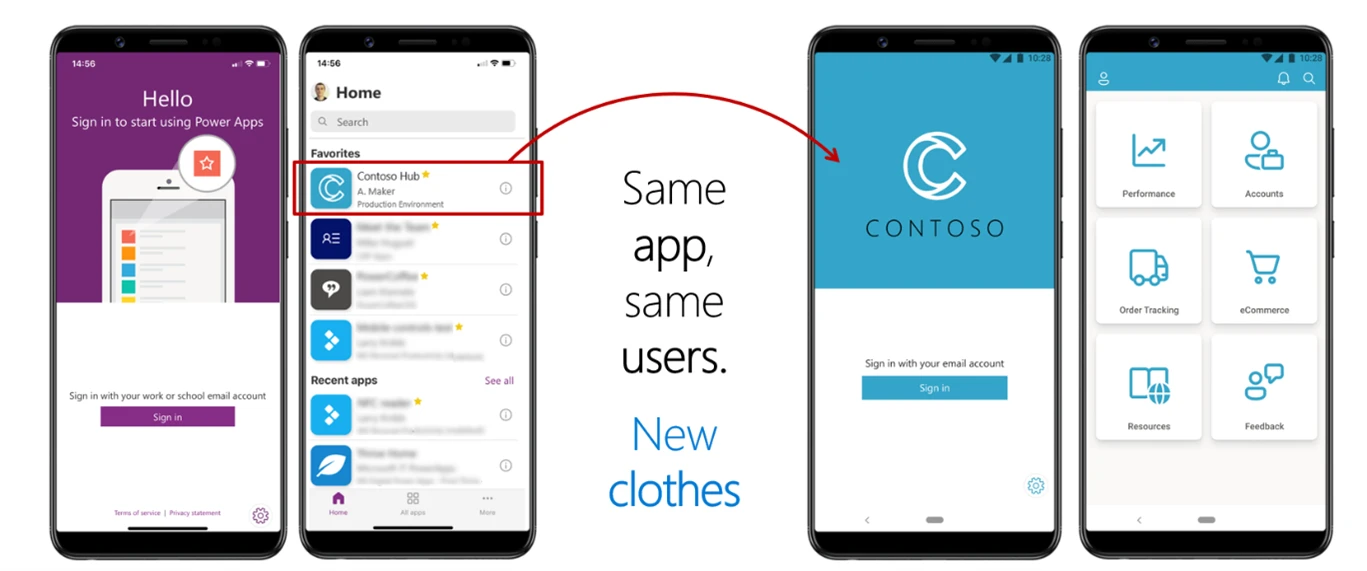
Integrate AI easier than ever into apps
Enterprises are using AI Builder to automate tasks, increase productivity, and gain insights about their business. The latest improvements make it easier than ever to add AI to your low code solutions.
- Bring Your Own Model: Companies can leverage existing investments in data science. Any AI model, built with any language, framework, or tooling, can now be used in Microsoft Power Platform via AI Builder.
- Form processing improvements: The Document Automation starter kit makes it easier and faster to train form processing models.
- More powerful and flexible integration of AI into your Power App: Using Power Fx, makers can now use any AI model on any control in canvas apps.
- Image Classification with Lobe: Domain experts can train image classification models on their computers with Lobe, and export those models into AI Builder to be used in Microsoft Power Platform.
- AI Builder starter capacity: Is now included in select Power Apps and Power Automate license plans.
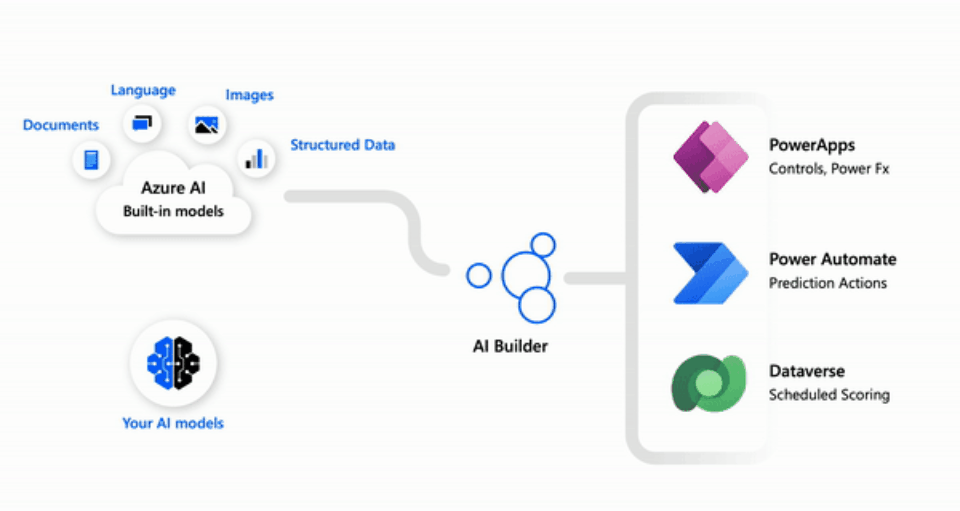
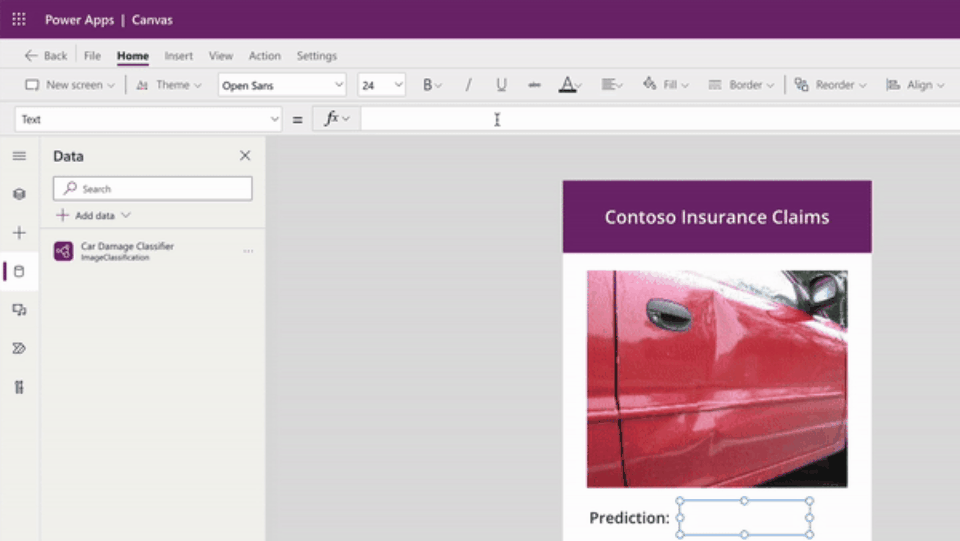
To learn more, visit Microsoft Power Platform and the Microsoft Power Platform blog.




